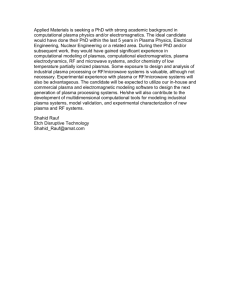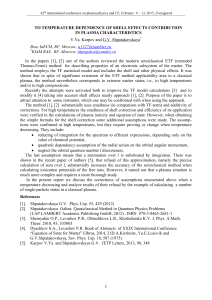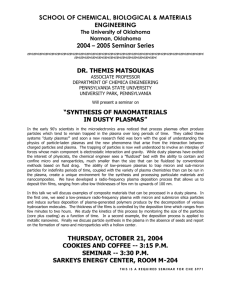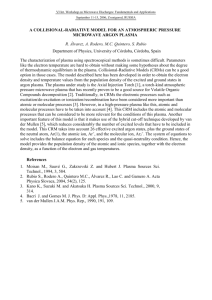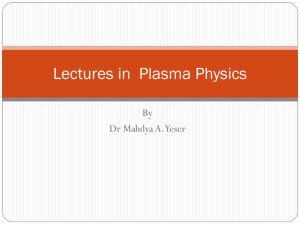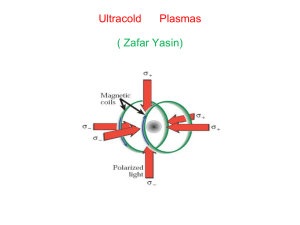kinetic compressional diocotron mode in the penning trap
advertisement
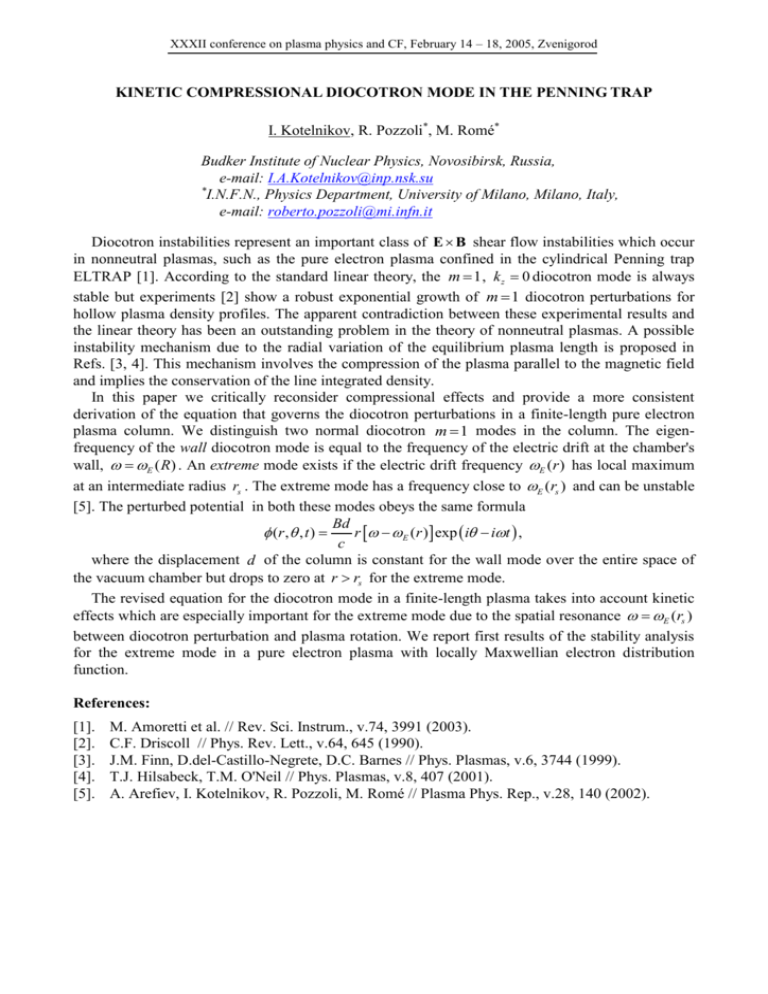
XXXII conference on plasma physics and CF, February 14 – 18, 2005, Zvenigorod KINETIC COMPRESSIONAL DIOCOTRON MODE IN THE PENNING TRAP I. Kotelnikov, R. Pozzoli*, M. Romé* Budker Institute of Nuclear Physics, Novosibirsk, Russia, e-mail: I.A.Kotelnikov@inp.nsk.su * I.N.F.N., Physics Department, University of Milano, Milano, Italy, e-mail: roberto.pozzoli@mi.infn.it Diocotron instabilities represent an important class of E B shear flow instabilities which occur in nonneutral plasmas, such as the pure electron plasma confined in the cylindrical Penning trap ELTRAP [1]. According to the standard linear theory, the m 1 , k z 0 diocotron mode is always stable but experiments [2] show a robust exponential growth of m 1 diocotron perturbations for hollow plasma density profiles. The apparent contradiction between these experimental results and the linear theory has been an outstanding problem in the theory of nonneutral plasmas. A possible instability mechanism due to the radial variation of the equilibrium plasma length is proposed in Refs. [3, 4]. This mechanism involves the compression of the plasma parallel to the magnetic field and implies the conservation of the line integrated density. In this paper we critically reconsider compressional effects and provide a more consistent derivation of the equation that governs the diocotron perturbations in a finite-length pure electron plasma column. We distinguish two normal diocotron m 1 modes in the column. The eigenfrequency of the wall diocotron mode is equal to the frequency of the electric drift at the chamber's wall, E ( R) . An extreme mode exists if the electric drift frequency E (r ) has local maximum at an intermediate radius rs . The extreme mode has a frequency close to E (rs ) and can be unstable [5]. The perturbed potential in both these modes obeys the same formula Bd (r , , t ) r E (r ) exp i it , c where the displacement d of the column is constant for the wall mode over the entire space of the vacuum chamber but drops to zero at r rs for the extreme mode. The revised equation for the diocotron mode in a finite-length plasma takes into account kinetic effects which are especially important for the extreme mode due to the spatial resonance E (rs ) between diocotron perturbation and plasma rotation. We report first results of the stability analysis for the extreme mode in a pure electron plasma with locally Maxwellian electron distribution function. References: [1]. [2]. [3]. [4]. [5]. M. Amoretti et al. // Rev. Sci. Instrum., v.74, 3991 (2003). C.F. Driscoll // Phys. Rev. Lett., v.64, 645 (1990). J.M. Finn, D.del-Castillo-Negrete, D.C. Barnes // Phys. Plasmas, v.6, 3744 (1999). T.J. Hilsabeck, T.M. O'Neil // Phys. Plasmas, v.8, 407 (2001). A. Arefiev, I. Kotelnikov, R. Pozzoli, M. Romé // Plasma Phys. Rep., v.28, 140 (2002).



